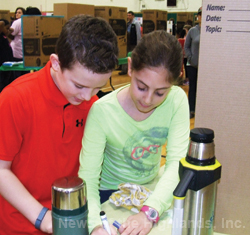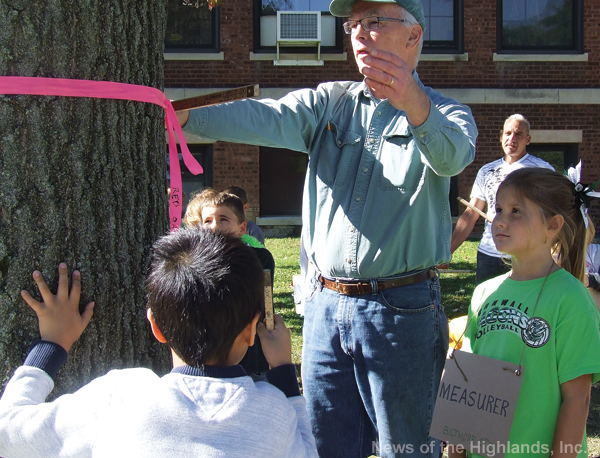
Adam Greher and Josie Kilgore look over their exhibit at the March 8 Science Fair
It was different from any science fair we had ever covered.
The March 8 event was held in the evening at the middle school, and included kids from Lee Road, Willow Avenue and Cornwall-on-Hudson Schools. But that’s not why it was different.
It started with a brief program in the auditorium. Gail Duffy, the assistant superintendent for instruction, welcomed the crowd and shared a quote from Albert Einstein, “The important thing is not to stop questioning.”
Jack Caldwell of the Black Rock Forest Consortium staff told the kids that they had contributed to science by recording their observations in the forest. Several students had collected data on acorn production and tree size.
Mrs. Duffy advised the youngsters to have fun and to avoid running in the hallways. The kids were too excited to adhere to the second instruction. When they were dismissed from the auditorium, some of them forgot about the “no running” rule and dashed to their exhibits.
What made the fair different from its predecessors is that some of the exhibitors weren’t students. The Black Rock staff challenged people to identify animals from their furs and skeletons. Peter Brandt and Phil Cameron from the Lions Club used a sophisticated device to test student eyesight. Their participation was a sign of things to come. There’ll be more outside exhibitors in the future.
Another change from past fairs was the involvement of high school science students. The teenagers visited each exhibit, asked questions, and then handed out certificates.
The high schoolers had fun, as Mrs. Duffy suggested, and they also served as role models — demonstrating that it’s still cool to do experiments as you get older.
WHY THE CHANGES: Mrs. Duffy was anxious to give the kids a shared experience as well as a chance to see the middle school.
Another objective was to make this a community event, since science isn’t limited to the classroom. That’s why she invited representatives of the Lions Club and the Black Rock Forest Consortium.
Involving the high school students may be the start of a trend where there are more activities for students of different grade levels. It worked at the science fair. All the high school students asked to come back.



